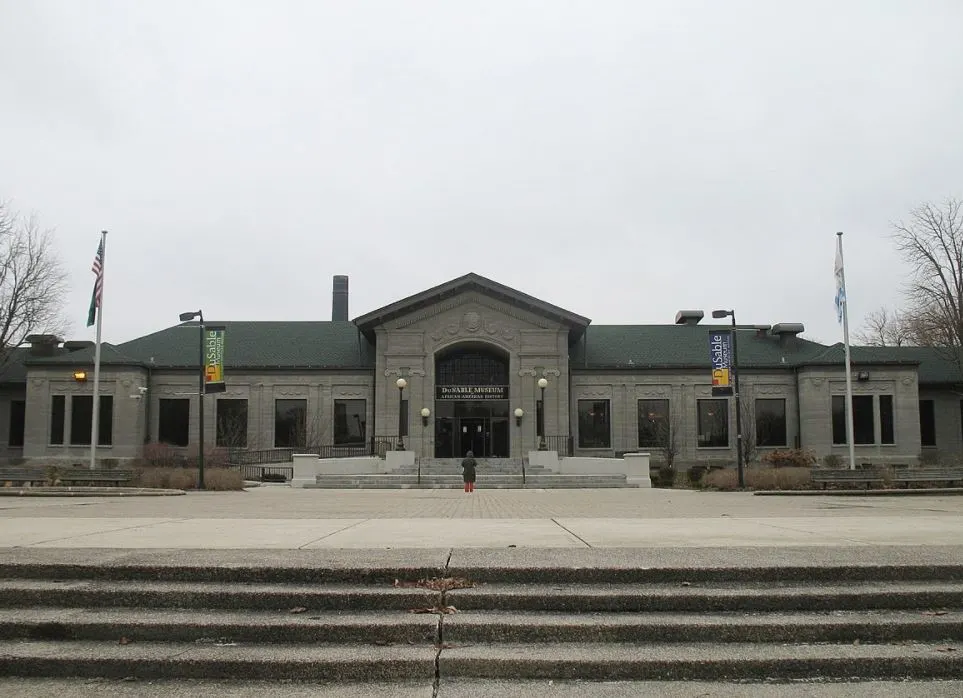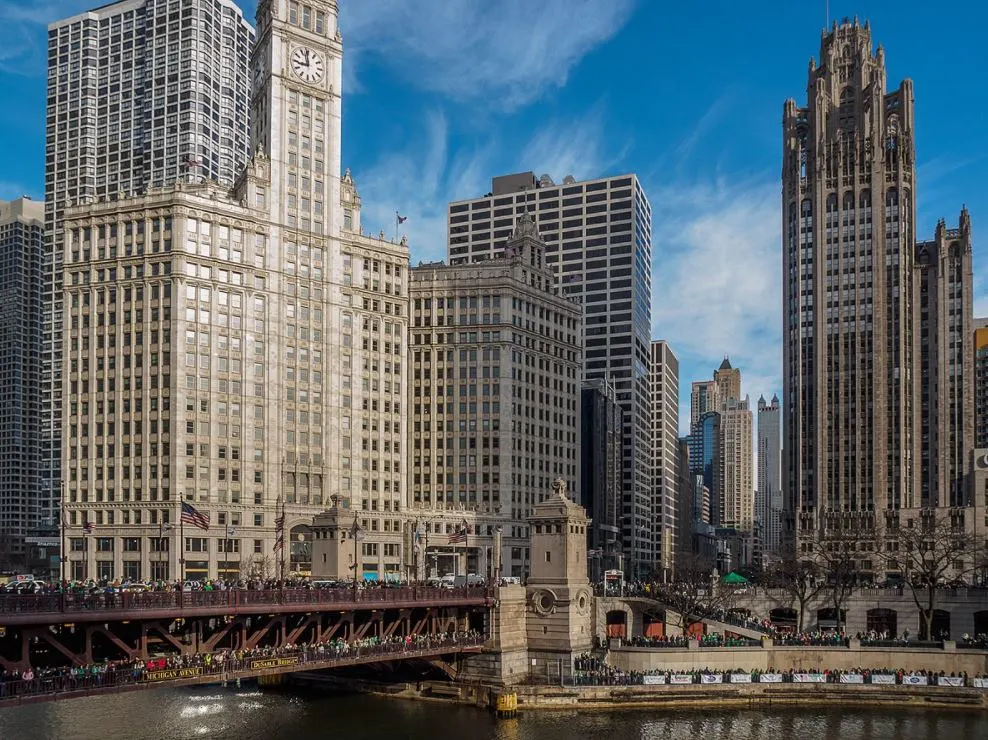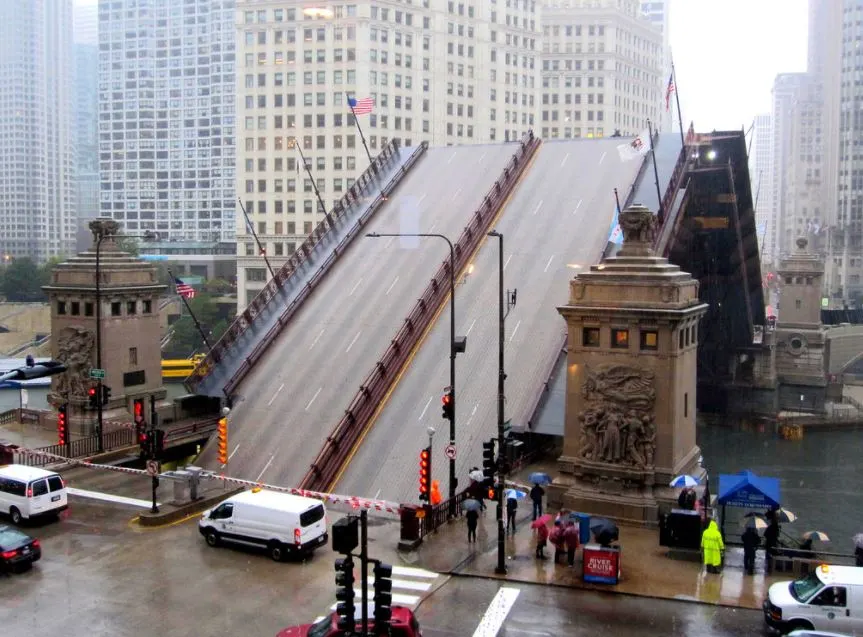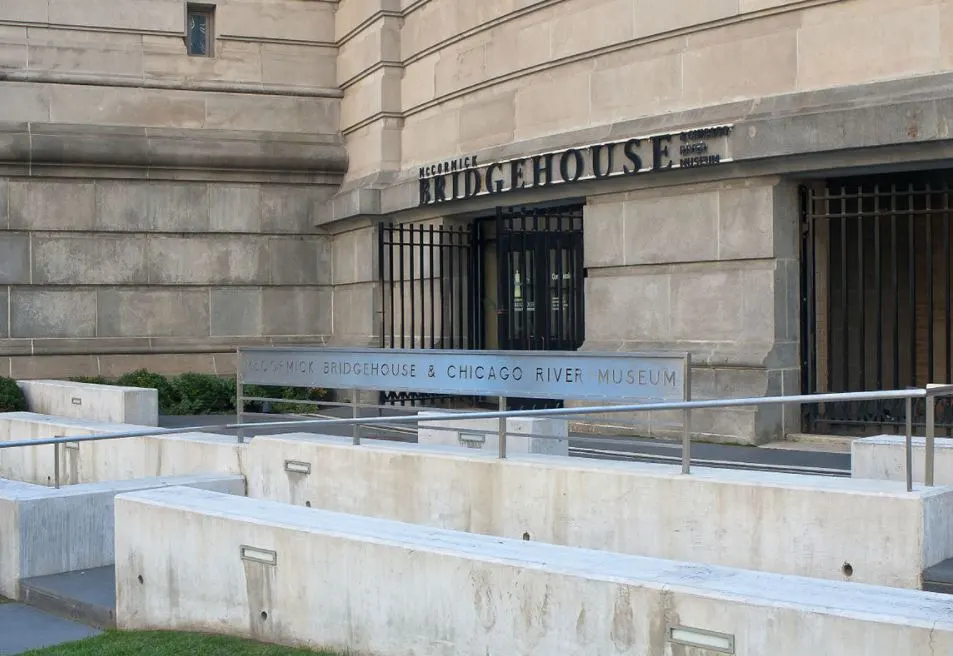One of the most important bridges in the history of the city of Chicago is located right in the heart of the Downtown area of the city.
In this post, you can discover the ultimate list of interesting facts about the DuSable Bridge, an iconic bridge in Chicago with a couple of fascinating stories to tell!
1. It carries an important road over the Chicago River
The DuSable Bridge is not just one of the most historically important bridges in Chicago, Illinois, mainly because of its location, but also carries one of the most famous roads in the city.
It carries Michigan Avenue across the Chicago River in Downtown Chicago, one of the main boulevards featuring the most important commercial areas in the city, including the so-called “Magnificent Mile.”
It has a north-south orientation and the northern part of the bridge is home to some of the most iconic buildings in the city, including the Wrigley Building and the Tribune Tower. The scenic Chicago Riverwalk is located just to its east as well.

2. It was renamed in 2010 in honor of a particular Chicago resident
The original name of the bridge upon completion in the year 1920 was the “Michigan Avenue Bridge, a reference to the road it carries on its two decks.
Because of its historically significant location, the bridge has been subject to being renamed throughout its history. The first two official proposals were the “Marquette–Joliet Bridge,” in honor of two explorers from the early days of the state of Michigan, and the “Fort Dearborn Bridge,” a reference to a fort that was located here before.
One of the most remarkable facts about the DuSable Bridge is that it was only renamed to its current name in the year 2010. This name is a reference to a man named Jean Baptiste Point du Sable (before 1750-1818), a trader of French-African descent who is considered to be the first non-indigenous resident of the city in 1780 and therefore the “Founder of Chicago.”

3. The northern side of the bridge has unique historical value
The main reason that the bridge was named in honor of Jean Baptiste Point du Sable is that he built his house on the northern part of where the bridge is located today, near the mouth of the Chicago River, in the year 1780.

The exact spot of his house is now an area referred to as “Pioneer Court,” a plaza nestled in between the skyscrapers of Downtown Chicago, a sight that DuSable would watch in astonishment today, that’s for sure!
His house ended up being bought by a man named John Kinzie in 1800. He seriously expanded the structure and the house is therefore also sometimes referred to as the “Kinzie Mansion.”

4. The southern side was once the location of a United States fort
Just over 2 decades following the construction of the first non-indigenous house in Chicago, a fort was built on the southern part of where the bridge is located today.
This fort was called “Fort Dearborn” and was completed in the year 1803. It was named in honor of Henry Dearborn (1751-1829), an American politician who served as the United States Secretary of War at the time.
The original fort was destroyed during the War of 1812 in a battle now referred to as the “Battle of Fort Dearborn.” It was rebuilt in 1816 but lost its purpose as a fortification in 1837.
The fort eventually ended up being destroyed yet again in 1871 during the Great Fire of Chicago. Today, only a plaque can be found where the fort’s southern perimeter wall once stood can be found.

5. A bridge here was first proposed in the late 19th century
The first time that a bridge was proposed in this location was in the year 1891, followed by countless other proposals, ranging from a tunnel to a bascule bridge proposed by the Chicago Tribune in 1903.
The first concrete idea came about in the year 1909 when the Burnham Plan of Chicago was created. This consisted of a wide boulevard and a bridge across the river at the location of the DuSable Bridge today.
The first plan to be approved was that of a double-decked bridge in the year 1913, but subsequent legal battles delayed the start of the project until April 15, 1918, the day the construction started.

6. It almost looked like a famous bridge in Paris, France
The bridge was designed as a double-leaf, double-deck, fixed counterweight, trunnion bascule bridge, and the project was completed by the Bureau of Engineering of the Chicago Department of Public Works.
Multiple designs were suggested, and perhaps the most notable was a suggestion to make the bridge look like the Pint Alexandre III in Paris, one of the most ornamented bridges in the city.
Perhaps this design wouldn’t have been that bad at all, especially with some of the most famous buildings in Chicago in the background, don’t you think?

7. The bridge held an amazing record upon completion
The architect of the project was the co-author of the 1909 Plan of Chicago, Edward H. Bennett (1874-1954). Apart from the Michigan Avenue Bridge, perhaps his most notable work was the Buckingham Fountain, the most prominent landmark in Grant Park.
One of the most fascinating facts about the DuSable Bridge is that it’s considered to be the first double-deck bridge in the world that featured roadways on both decks upon completion.
Fast traffic was reserved for the upper deck, while the slower traffic, such as delivering trucks for the nearby docks, had to settle for the lower deck.

8. One of the piers was sunk to the bedrock below the river
The bridge has the capacity to open and close and counterweights are used for this mechanism. These weights drop into concrete pits of about 12 meters (40 feet) deep and lower about 10.5 meters (34.5 feet) below the surface of the water.
These massive concrete pits on each side of the bridge are supported by 9 cylindrical concrete piers to provide stability. The 4 counterweights each weigh 1,447 tonnes (1,595 short tonnes).
17 of these piers are sunk at depths between 24 to 27 meters (80 to 90 feet), while one of them reaches the bedrock below to a depth of 33 meters (108 feet) below the river surface.

9. The bridgehouses are decorated with sculpted reliefs
Because the bridge has such historic importance in the city, 4 sculpted reliefs have been added in 1928 which depict scenes from the history of the city. These 4 reliefs are located on each of the 4 bridgehouses and depict:
- The Discoverers – Depicts early explorers in the region, Louis Joliet, Jacques Marquette, René-Robert Cavelier, Sieur de La Salle, and Henri de Tonti.
- The Pioneers – Depicts John Kinzie as he leads a group of people through the wilderness.
- Defense – Depicts US Army Officer George Ronan during the 1812 Battle of Fort Dearborn.
- Regeneration – Depicts workers rebuilding the city following the Great Chicago Fire of 1871.
The first two reliefs are featured on the northern side of the bridge and were sculpted by James Earle Fraser (1876-1953) while the reliefs on the southern side were sculpted by Henry Hering (1874-1949).

10. The southwestern bridgehouse became a museum in 2006
The southwest bridgehouse is referred to as the “McCormick Bridgehouse & Chicago River Museum” and can be accessed from the Chicago Riverwalk.
Here you can learn everything about the history of both the Chicago River and the DuSable Bridge. The museum was named in honor of the former owner of the Chicago Tribune newspaper, Robert R. McCormick (1880-1955), as his foundation raised $950,000 to make the establishment of the museum possible.

